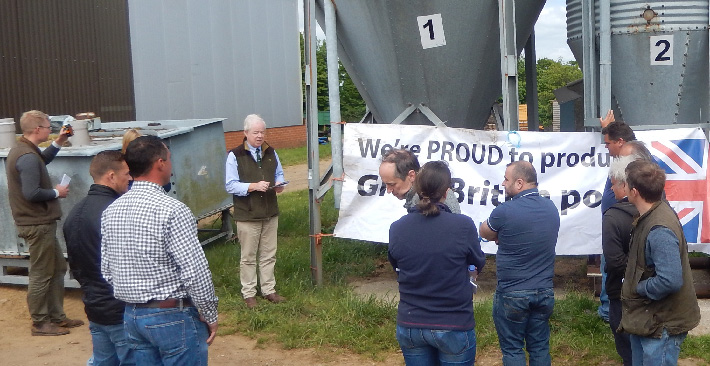Something of a “two-tier” trade, with domestic prices being supported by an ongoing strong demand from China where millions of pigs have now been taken out of the supply chain due to African Swine Fever.
Reports from the UK, however, are that domestic demand remains somewhat fragile and although “it’s an ill wind”, without the ASF situation in the Far East, all the signs are that this is putting a rising base in the market without which we could see prices 20-30p per kg lower and with the trend for more single species UK abattoirs to apply for China permits, this should help to stimulate demand at a time of year when prices often struggle.
The SPP moved up by a useful .92p and now stands at 157.72p, although it is interesting to note that German prices have remained unchanged at €1.85 since August 21, signalling a firm but stable EU mainland market at present.
Closer to home, fresh meat buyers are still commenting on the lack of any significant improvement in domestic demand for fresh pork and the price is being led by the export market.
Spot bacon trades were reported in the 158-162p region according to spec and most weekly contribution prices have remained at similar levels, with others up by around 1p within the 150-157p range, which is still lower than the SPP.
With the value of the pound virtually unchanged the euro is currently worth 86.18p and as a result, cull sow values have held at similar levels on the week with most traded between 104-109p according to load size.
Weaner prices are however, indicating firmer trends with the latest AHDB 30kg weaner price at its highest level for many months averaging £57.02 and the 7kg ex farm average stands at a relatively healthy £40.86p with buyers across the board showing more interest and possibly indicating the prospect of firmer finished pig demand around and even beyond the Christmas period, which could be a pleasant change from falling prices when the Christmas decorations come down.
UK feed costs are showing very slight increases with December feed wheat traded at £147/t and a significant rise to £160/t for September next year.
Feed barley futures are between £131/t for December and £147/t for next September, but protein values have eased a touch with Hipro soya traded for December-April ’20 at £295/t and between May and October ’20 at £299/t.
Currency fluctuations will continue to have an influence on cereal and protein prices as well as global weather and climatic conditions, so any opportunities to lock into lower prices should be considered.
And finally, on the bio security front, yet more reasons why we should all ensure that movements of livestock and pork products into this country should be very tightly controlled, we also have the threat of feral pigs to deal with and these have been the vector spreading ASF in some parts of the world.
This comes at a time where the Australian government should be commended for the measures they are taking to limit pork products illegally entering the food chain with the news that up to half of the illegally imported pork products have been found to be infected with ASF and a rigid policy of deporting tourists who have bought in any pork products is being followed and visitors visas can be cancelled on bio-security grounds.
Other countries including the UK, could do well to pay greater attention to limiting potentially infective imports which could spell the downfall of the UK pig industry if ASF manages to swim the channel one way or another.




